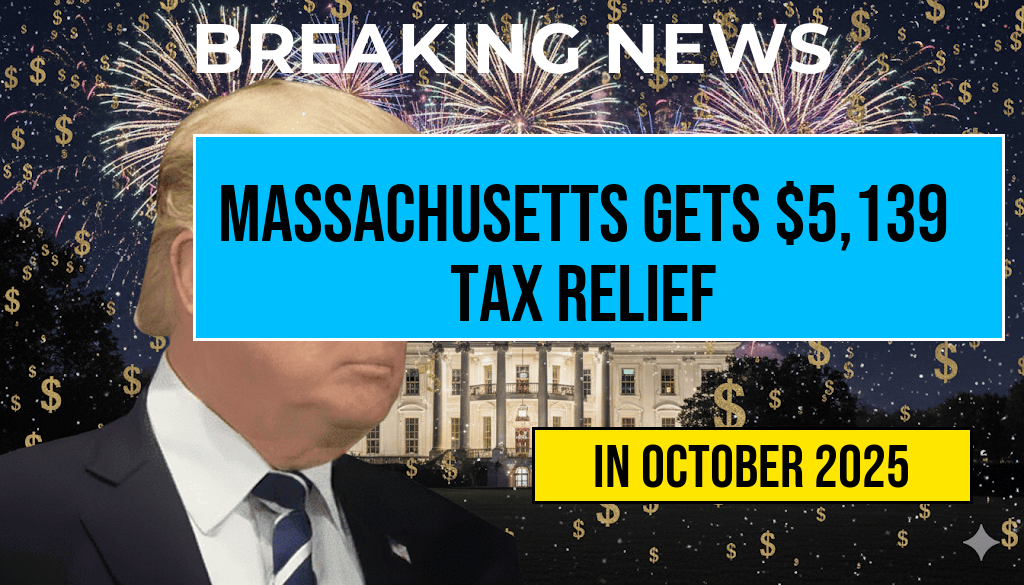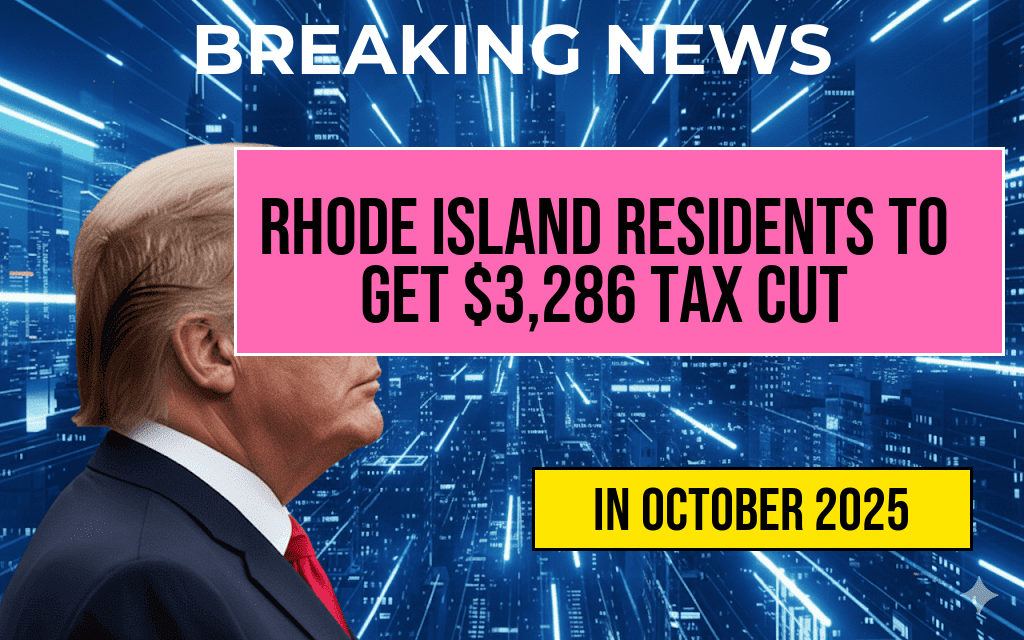Massachusetts residents are seeing an average tax relief of $5,139 this year as a result of changes introduced under the recent Trump tax plan. According to preliminary data from the Massachusetts Department of Revenue, thousands of households across the state have benefited from adjustments in federal tax regulations that have led to lower tax liabilities. This relief is part of a broader national trend where many Americans are experiencing reduced taxes, driven by reforms aimed at simplifying the tax code and expanding deductions. Local taxpayers are already reporting their refunds and adjusted withholding amounts, with financial analysts noting that the impact varies depending on individual income levels and filing statuses.
Details of the Tax Relief and Its Distribution
How the $5,139 figure is calculated
The average tax savings of $5,139 per household in Massachusetts stems from a combination of factors including increased standard deduction, reduced marginal tax rates, and expanded child and family credits. The data, compiled from state and federal tax filings, indicates that the relief predominantly benefits middle-income families, with higher earners seeing smaller proportional benefits. The formula considers the number of filers, income brackets, and deductions, providing an aggregated snapshot of the relief impact across the state.
Who benefits the most?
- Middle-income families: Those earning between $50,000 and $100,000 have reported the largest reductions in tax owed, with some households seeing reductions exceeding $6,000.
- Families with children: Expanded child tax credits and dependent exemptions have increased refunds for families with children, further amplifying the relief.
- Senior citizens and retirees: Adjustments in the tax code have also favored seniors, especially those with moderate retirement income.
State-Level Impacts and Responses
Variations across Massachusetts counties
While the average relief is significant statewide, certain counties have experienced more pronounced benefits. For example, in Middlesex County, the average household reported a decrease of $5,500 in tax liability, whereas in Barnstable County, the reduction averaged closer to $4,800. Urban areas with higher median incomes tend to see larger absolute savings, though the percentage reduction relative to income remains fairly consistent across regions.
Local government and public reception
State officials have largely welcomed the relief, emphasizing its role in boosting household disposable income and economic stability. However, some advocacy groups highlight concerns about long-term fiscal sustainability, noting that federal reforms have also led to increased deficits. Meanwhile, residents have expressed a mix of relief and cautious optimism as they adjust their financial planning for the upcoming year.
Tax Plan Overview and National Context
Key features of the Trump tax reforms
| Aspect | Description |
|---|---|
| Standard Deduction | Increased from $12,700 to $24,000 for married couples filing jointly (2023 figures) |
| Tax Rates | Reduced marginal rates across several income brackets |
| Child Tax Credits | Expanded from $1,000 to $2,000 per qualifying child |
| Itemized Deductions | Limited deductions for state and local taxes, affecting high-tax states like Massachusetts |
While some taxpayers have benefited from these reforms, critics argue that the changes have contributed to increased federal deficits and uneven benefits across income groups. The Internal Revenue Service (IRS) has reported that the majority of middle-income households saw reductions in their tax bills, aligning with the administration’s goal of easing the tax burden for the middle class (source).
Looking Ahead: Fiscal Outlook and Policy Discussions
As Massachusetts residents begin to file their taxes, discussions about the long-term implications of the reforms continue. State officials are monitoring whether the reduced federal revenue will necessitate adjustments in state policies or budgets. Meanwhile, some policymakers advocate for targeted measures to ensure that the benefits of tax relief reach lower-income households and that the state’s fiscal health remains stable.
Experts from organizations like the Tax Policy Center emphasize that while tax cuts can stimulate economic activity, they also pose challenges for government funding and public services. The ongoing debate underscores the importance of balancing tax relief with fiscal responsibility, especially as federal and state governments evaluate future tax policy directions.
For residents seeking more detailed information on their individual tax impacts, the IRS offers resources and guidance at irs.gov. Massachusetts taxpayers are encouraged to consult with qualified tax professionals to optimize their filings and understand the specific benefits they may have received under recent reforms.
Frequently Asked Questions
What is the amount of tax relief residents in Massachusetts received under the Trump tax plan?
Massachusetts residents received approximately $5,139 in tax relief under the Trump tax plan.
How does the Trump tax plan impact individual taxpayers in Massachusetts?
The Trump tax plan provides relief to individual taxpayers by reducing their overall taxes and increasing their refunds, as evidenced by the average of $5,139 in tax relief.
When did Massachusetts residents start seeing the tax relief benefits from the Trump tax plan?
Massachusetts residents began to see the tax relief benefits following the implementation of the Trump tax plan, which was enacted in late 2017 and took effect in 2018.
Who qualifies for the tax relief under the Trump tax plan in Massachusetts?
Most taxpayers in Massachusetts who filed federal taxes during the relevant years qualify for the tax relief, with the amount varying based on income level and filing status.
Are there any specific changes in tax laws in Massachusetts due to the Trump tax plan?
While the Trump tax plan primarily affects federal tax laws, some changes may influence state tax calculations indirectly. Residents should consult local tax authorities for specific state-level updates.








